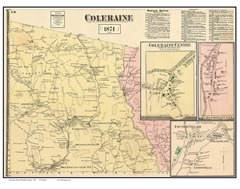You are currently browsing the monthly archive for July 2016.
Monthly Archive
A Village Takes It
July 31, 2016 in Community, GIS, Social Web | Tags: Community, Social Contract, Village | by Terry | Leave a comment
 I’ve been using Twitter since late 2008. At first I didn’t think much of it, viewing it (as many people do) as a vehicle through which people share the insipid minutiae of their lives. But I had enough of a general interest in social media to check it out, so I took it for a spin to see if I liked it. At first I had trouble “getting” it, and it was very difficult for me to get used to the character limit. I decided to take this as a challenge and as an opportunity to develop some skills I obviously needed. Once I got somewhat used to the platform and began to look around, I quickly became enamored.
I’ve been using Twitter since late 2008. At first I didn’t think much of it, viewing it (as many people do) as a vehicle through which people share the insipid minutiae of their lives. But I had enough of a general interest in social media to check it out, so I took it for a spin to see if I liked it. At first I had trouble “getting” it, and it was very difficult for me to get used to the character limit. I decided to take this as a challenge and as an opportunity to develop some skills I obviously needed. Once I got somewhat used to the platform and began to look around, I quickly became enamored.
This is because it wasn’t long before I discovered some of my fellow Map Dorks. Having easy access to a group of people who shared my love of maps, software and data was a totally new experience for me. And it was rather thrilling. The number of Map Dorks I followed grew quickly, and it wasn’t long before I realized that the mapping community was using Twitter as a tool rather than a platform. It seemed less like being hit by a firehose of the universe’s random verbiage and more like sitting around in a bar at a conference.
I was completely sold the night I tried to follow a tutorial to set up a personal GeoServer map server in my home office. I couldn’t get it to work, and after trying for a while I got frustrated and gave up. I tossed a mention of my frustration into the void of my Twitter stream, and before long a guy named Steve sent me a Tweet to see if he could help. Turned out Steve was the guy who wrote the tutorial, and his initial Tweet turned into a lengthy real-time support session (I don’t think we ever got it running. The problem was that I thought I was good enough to get it up and running on an early beta version of Windows 7. I wasn’t).
It was like answering a knock at the door to find a Jedi Knight saying “I felt a disturbance in the Force”.
I was floored by the experience, for a couple of reasons. First was the sheer power of leveraging Twitter in such a fashion. I still don’t understand why businesses don’t use Twitter in this manner to provide needed but not necessarily asked for customer support. Seems to me like it would be a gold mine.
Second was that Steve was a nice enough guy to spend a bunch of his time helping somebody on the Internet that he had never met. And as I looked back in time (and as I paid attention going forward), I found that Steve wasn’t the only Map Dork out there who behaved this way. In fact, being open, accessible, helpful and informative turns out to be the norm for Map Dorks. The reason my experiences with Twitter turned out so differently than other people I knew – the reason my experiences were so overwhelmingly positive – was simply because I had fallen in with good companions. Because through Twitter I had met a group of people who were using Twitter as a tool to communicate, support, help, share and learn from each other. In short, we were leveraging Twitter as a vehicle through which we could build a community.
And this process has proven to be ongoing and shows no signs of slowing. Emily noticed the nature of this community when she started GISTribe. At least, I assume she did since she chose the word ‘tribe’ rather than ‘committee’ or ‘twitter group’ or some similar nonsense. GISTribe has done a great deal toward maintaining and growing our online community, as have a slew of channels on Slack. People too numerous to mention have dedicated and continue to dedicate enormous amounts of their time and energy to the community, and because of it the network keeps growing and the support structure keeps getting stronger.
Like every community, ours sometimes encounters problems. An incident occurred last week, the details of which I know little about. I do know there was some teasing (I even participated a bit) and there were some hurt feelings. While I don’t know the details (as I said), it appears that the entire thing started as a misunderstanding about the nature of this community. That it is a community of peers (but not the kind that sit in Parliament).
An important, fundamental part of our community is our lack of hierarchy. As people we are individualists, as professionals we are dedicated to the discipline, and as a group we are egalitarian as fuck.
And we all contribute to the community, as far as we are willing and able. There are some who contribute more to the community and/or profession than others (some significantly so), and for this the community happily responds with gratitude and respect. But not by bestowing celebrity. In an egalitarian community, distinction is applied with an even hand.
As a community, it falls to all of us to maintain the social contract. To see to it that our discussions are exchanges of ideas rather than hyperbolic assaults. That our disagreements (even arguments) are differences of opinion rather than contests of will.
Sometimes this isn’t so easy and we screw things up. But we’re human and we make mistakes so that’s okay. And sometimes we just can’t make things work. You may find yourself unable to reconcile your differences with another community member. This also is okay. It can and does happen to anyone (it has happened to me more than once). Sometimes it’s best for the community if some of its members simply avoid contact with one another. Twitter provides a variety of tools for use in such situations. Use them, if need be. The community will benefit.
Lastly, as an egalitarian community the only assigned tasks any of us have are the ones we assign to ourselves. All other tasks become the responsibility of the group as a whole, and it falls upon all of us to see that they get done.
So what do you say we all grab a broom and clean up this mess so we can move forward?

